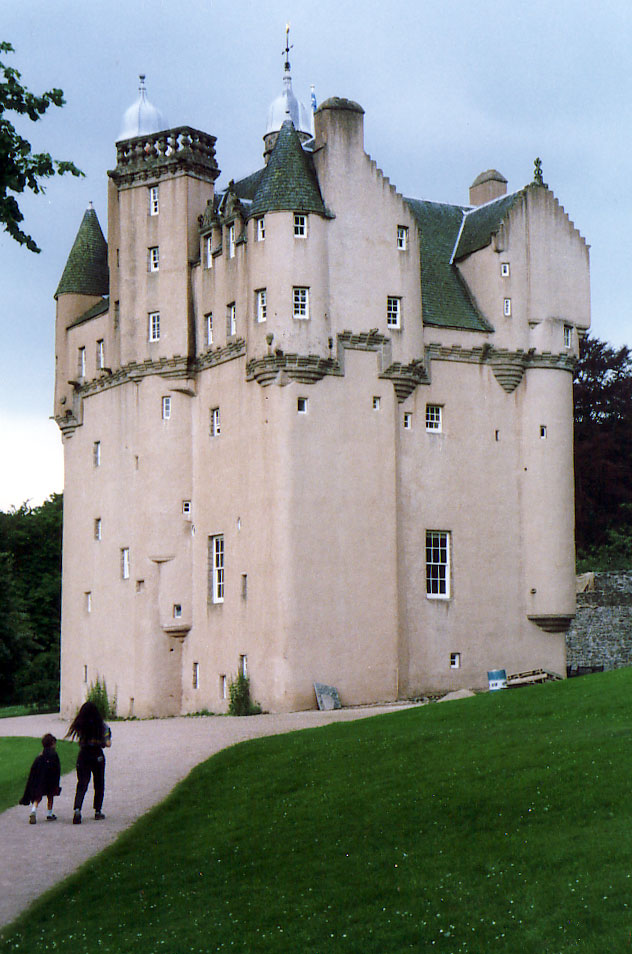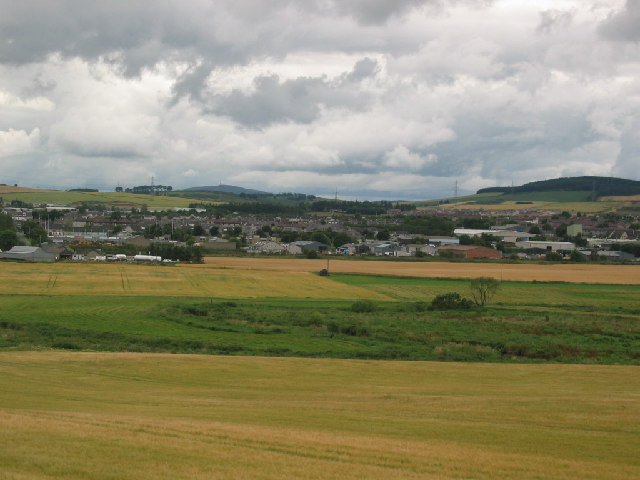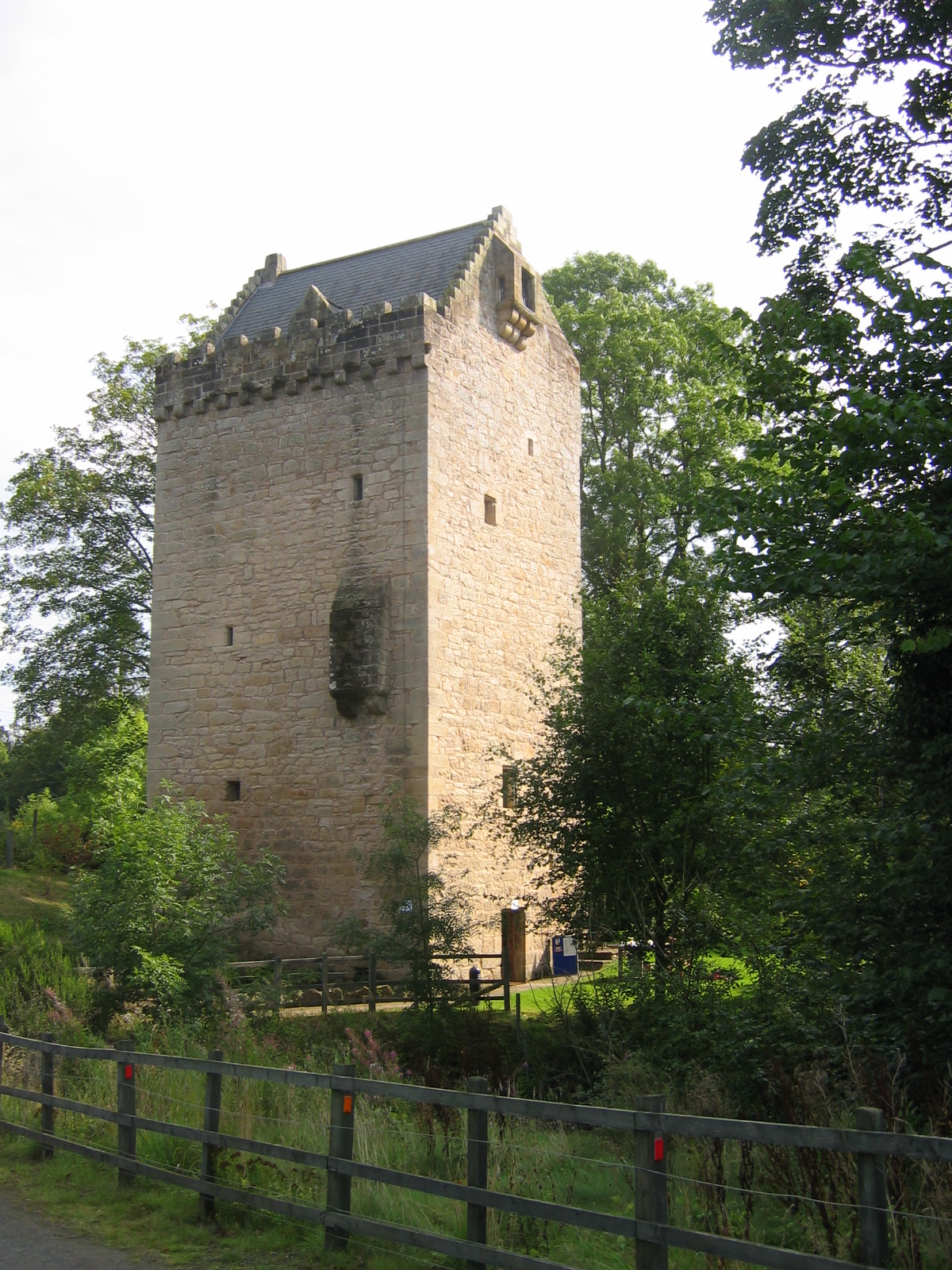|
Frasers Of Muchalls
The Frasers of Muchal-in Mar, sometimes referred to as the Frasers of Muchalls, were a branch of the Fraser family in Scotland. In 1366 Thomas Fraser, a descendant of Sir Alexander Fraser of Cornton brother of Sir Richard Fraser of Touch-Fraser, exchanged the lands in Petyndreich, Stirlingshire for those of Kinmundy, Aberdeenshire. His grandson Thomas exchanged the estate of Cornton for Stonywood and Muchalls in Aberdeenshire. It was presumably Thomas who erected the towerhouse stronghold overlooking the North Sea, which is now known as Muchalls Castle, having undergone expansion by the Burnetts of Leys in 1617. His descendant, Andrew Fraser, who was created Lord Fraser in 1633, completed Castle Fraser in 1636. The title became dormant following the premature death in 1716 of Charles, 4th Lord Fraser, a Jacobite who, while trying to escape from Government troops, fell over the cliffs at Pennan, near Peterhead. Castle Fraser, near Inverurie, Aberdeenshire, has been under ... [...More Info...] [...Related Items...] OR: [Wikipedia] [Google] [Baidu] |
North Sea
The North Sea lies between Great Britain, Denmark, Norway, Germany, the Netherlands, Belgium, and France. A sea on the European continental shelf, it connects to the Atlantic Ocean through the English Channel in the south and the Norwegian Sea in the north. It is more than long and wide, covering . It hosts key north European shipping lanes and is a major fishery. The coast is a popular destination for recreation and tourism in bordering countries, and a rich source of energy resources, including wind energy, wind and wave power. The North Sea has featured prominently in geopolitical and military affairs, particularly in Northern Europe, from the Middle Ages to the modern era. It was also important globally through the power northern Europeans projected worldwide during much of the Middle Ages and into the modern era. The North Sea was the centre of the Viking Age, Vikings' rise. The Hanseatic League, the Dutch Golden Age, Dutch Republic, and Kingdom of Great Britain, Brita ... [...More Info...] [...Related Items...] OR: [Wikipedia] [Google] [Baidu] |
National Trust For Scotland
The National Trust for Scotland () is a Scottish Building preservation and conservation trusts in the UK, conservation organisation. It is the largest membership organisation in Scotland and describes itself as "the charity that cares for, shares and speaks up for Scotland's magnificent heritage". The trust owns and manages around 130 properties and of land, including List of castles in Scotland, castles, ancient small dwellings, historic sites, Gardens in Scotland, gardens, coastline, mountains and countryside. It is similar in function to the National Trust, which covers England, Wales, and Northern Ireland, and to National trust, other national trusts worldwide. History The trust was established in 1931 as the "National Trust for Scotland for Places of Historic Interest or Natural Beauty", following discussions held in the smoking room of Pollok House. The Trust was incorporated on 1 May 1931, with John Stewart-Murray, 8th Duke of Atholl being elected as its first presiden ... [...More Info...] [...Related Items...] OR: [Wikipedia] [Google] [Baidu] |
Inverurie
Inverurie (Scottish Gaelic: ''Inbhir Uraidh'' or ''Inbhir Uaraidh'', 'mouth of the River Ury') is a town in Aberdeenshire, Scotland at the confluence of the rivers Ury and River Don, Aberdeenshire, Don, about north-west of Aberdeen. Geography Inverurie is in the strath of the River Don, Aberdeenshire, River Don at the centre of Aberdeenshire and is known locally as the Heart of the Garioch. It sits between the River Don, Aberdeenshire, River Don and the River Ury and is from the imposing hill of Bennachie. The town centre is triangular and is dominated by Inverurie Town Hall built in 1863. In the middle of the 'square' (as it is known locally) is the Inverurie and District War Memorial, capped by a lone Gordon Highlander looking out over the town. The main shopping areas include the Market Place and West High Street which branches off from the centre towards the more residential part of the town. South of the River Don is the village of Port Elphinstone, which is part of the ... [...More Info...] [...Related Items...] OR: [Wikipedia] [Google] [Baidu] |
Peterhead
Peterhead (; , ) is a town in Aberdeenshire, Scotland. It is the council area's largest settlement, with a population of 19,060 at the 2022 Census for Scotland, 2022 Census. It is the largest fishing port in the United Kingdom for total landings by UK vessels, according to a 2019 survey."Brexit trade deal: What does it mean for fishing?" - BBC News, December 2020 Peterhead sits at the easternmost point in mainland Scotland. It is often referred to as ''The Blue Toun'' (locally spelled "The Bloo Toon") and its natives are known as ''Bloo Touners''. They are also referred to as ''blue mogganers'' (locally spelled "bloomogganners"), supposedly from the blue worsted ''moggans'' or stockings that the fishermen originally wore. Prehistory and archaeology Expansion of the town's landfill led to ...[...More Info...] [...Related Items...] OR: [Wikipedia] [Google] [Baidu] |
Pennan
Pennan () is a small village in Aberdeenshire, Scotland, consisting of a small harbour and a single row of homes, including a hotel. It is on the north-facing coast and is about one hour's drive from Aberdeen. It was formerly known as St Magnus Haven or Auchmedden. Etymology The name ''Pennan'' was recorded in 1587 as ''Pennand''. It is possibly derived from the Brittonic element ''*pen'' meaning "head, end, promontory" ( Welsh ''pen''). Area history Pennan seems to have come into existence as a fishing village in the 18th century. The people of Pennan were dependent on the sea. Most families had small boats for their own personal use. Where the men would catch the fish, it was usually down to the women and children to try to sell it to clients in the country. Until the 1930s, the population of the village seems to have come under three main surnames - Watt, Gatt and West. In the last 50 years, most of the native families have moved out and most of the houses have been bough ... [...More Info...] [...Related Items...] OR: [Wikipedia] [Google] [Baidu] |
Castle Fraser
Castle Fraser is the most elaborate Z-plan castle in Scotland and one of the grandest 'Castles of Mar'. It is located near Kemnay, Aberdeenshire, Kemnay in the Aberdeenshire region of Scotland. The castle stands in over of landscaped grounds, woodland and farmland which includes a walled kitchen garden of the 19th century. There is Archaeology, archaeological evidence of an older square tower dating from around 1400 or 1500 within the current construction. The castle is a Category A listed building and the grounds are included in the Inventory of Gardens and Designed Landscapes in Scotland. Construction Originally known as ''Muchall-in-Mar'', construction of the elaborate, five-storey Z-plan castle was begun in 1575 by the 6th Laird of Fraser, Michael Fraser, on the basis of an earlier tower, and was completed in 1636. A panel on the northern side of the castle is signed ''"I Bel"'', believed to be the Mason's mark, mark of the master mason John Bell of Midmar, the castle is ... [...More Info...] [...Related Items...] OR: [Wikipedia] [Google] [Baidu] |
Burnetts Of Leys
The House of Burnett (Burnett, Burnette, Burnard, Bernard) is a Scottish Lowlands, Lowland and Scottish Borders, Border Scottish family composed of several branches. The Chief of the Name and Arms of Burnett is James Comyn Amherst Burnett of Leys. Origins of the name It remains uncertain if the name of Burnett is of Saxon or Norman origins. It has been suggested that the name Burnett is derived from the Old French ''burnete'', ''brunette'', which is a diminutive of ''brun'' meaning "brown", "dark brown". Another proposed origin of the name is from ''burnete'', a high quality wool cloth originally dyed to a dark brown colour.''Crannog to Castle; A History of the Burnett Family in Scotland'', ed. Eileen A. Bailey (Banchory: Leys Publishing, 2000), pp. 2-3 There is also evidence which suggests that Burnett stems from the English surname of ''Burnard'', a derivative of the Anglo-Saxon name "Beornheard". Spelling variations of the name in early documents show Burnet and Burnard/Bernar ... [...More Info...] [...Related Items...] OR: [Wikipedia] [Google] [Baidu] |
Muchalls Castle
Muchalls Castle stands overlooking the North Sea in the countryside of Kincardine and Mearns, Aberdeenshire, Scotland. The lower course is a well-preserved Romanesque, double-groined 13th-century tower house structure, built by the Frasers of Muchalls. Upon this structure, the 17th-century castle was begun by Alexander Burnett of Leys and completed by his son, Sir Thomas Burnett, 1st Baronet, in 1627. The Burnetts of Leys built the remaining four-storey present-day castle. One of the most interesting castles in North-East Scotland, according to noted architectural historian Nigel Tranter, it is designed in the classic L style with a further extension wing at the west end. Muchalls Castle entered national history in 1638 when a seminal Covenanter gathering took place there, precedent the English Civil War. The plasterwork ceilings of the principal drawing rooms are generally regarded as among the three finest examples of plasterwork ceilings in Scotland. These adornments ... [...More Info...] [...Related Items...] OR: [Wikipedia] [Google] [Baidu] |
Towerhouse
A tower house is a particular type of stone structure, built for defensive purposes as well as habitation. Tower houses began to appear in the Middle Ages, especially in mountainous or limited access areas, to command and defend strategic points with reduced forces. At the same time, they were also used as an aristocrat's residence, around which a castle town was often constructed. Europe After their initial appearance in Ireland, Scotland, the Stins, Frisian lands, Spain, Northern Spain and England during the High Middle Ages, tower houses were also built in other parts of western Europe, especially in parts of France and Italy. In Italian medieval communes, urban ''palazzi'' with a very tall tower were increasingly built by the local highly competitive Patrician (post-Roman Europe), patrician families as power centres during times of internal strife. Most north Italian cities had a number of these by the end of the Middle Ages, but few now remain, notably Two Towers, Bologn ... [...More Info...] [...Related Items...] OR: [Wikipedia] [Google] [Baidu] |
Castle Fraser 1
A castle is a type of fortified structure built during the Middle Ages predominantly by the nobility or royalty and by military orders. Scholars usually consider a ''castle'' to be the private fortified residence of a lord or noble. This is distinct from a mansion, palace, and villa, whose main purpose was exclusively for ''pleasance'' and are not primarily fortresses but may be fortified. Use of the term has varied over time and, sometimes, has also been applied to structures such as hill forts and 19th- and 20th-century homes built to resemble castles. Over the Middle Ages, when genuine castles were built, they took on a great many forms with many different features, although some, such as curtain walls, arrowslits, and portcullises, were commonplace. European-style castles originated in the 9th and 10th centuries after the fall of the Carolingian Empire, which resulted in its territory being divided among individual lords and princes. These nobles built castles ... [...More Info...] [...Related Items...] OR: [Wikipedia] [Google] [Baidu] |
Aberdeenshire
Aberdeenshire (; ) is one of the 32 Subdivisions of Scotland#council areas of Scotland, council areas of Scotland. It takes its name from the Shires of Scotland, historic county of Aberdeenshire (historic), Aberdeenshire, which had substantially different boundaries. The Aberdeenshire Council area includes all of the areas of the historic counties of Aberdeenshire and Kincardineshire except the area making up Aberdeen City Council area, as well as part of Banffshire. The historic county boundaries are still officially used for a few purposes, namely land registration and Lieutenancy areas of Scotland, lieutenancy. Aberdeenshire Council is headquartered at Woodhill House in Aberdeen, making it the only Scottish council whose headquarters are located outside its jurisdiction. Aberdeen itself forms a different council area (Aberdeen City). Aberdeenshire borders onto Angus, Scotland, Angus and Perth and Kinross to the south, Highland (council area), Highland and Moray to the west a ... [...More Info...] [...Related Items...] OR: [Wikipedia] [Google] [Baidu] |











